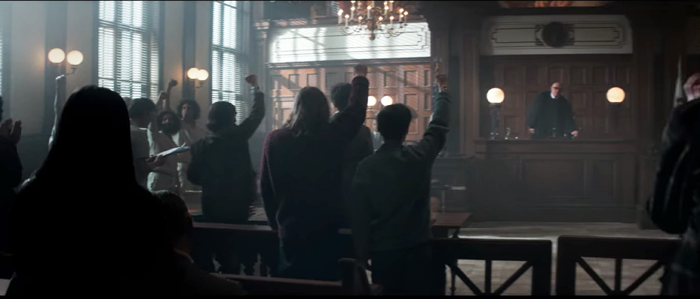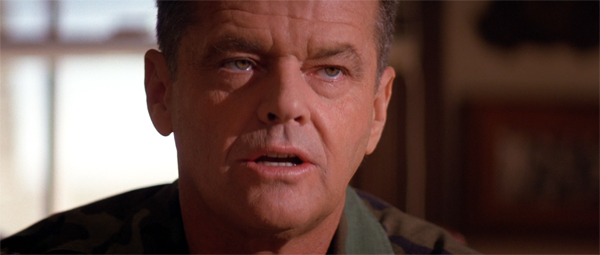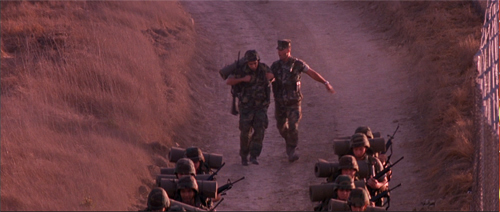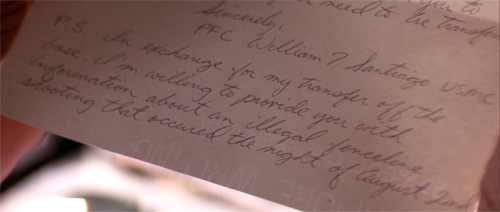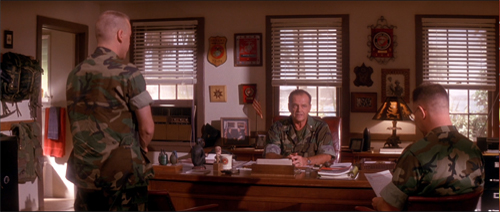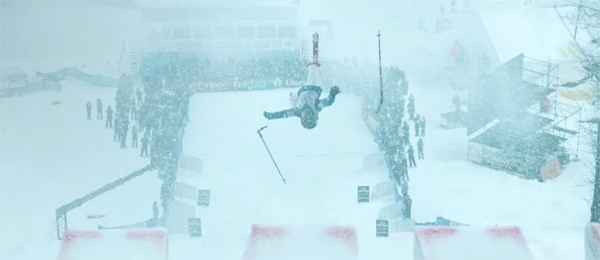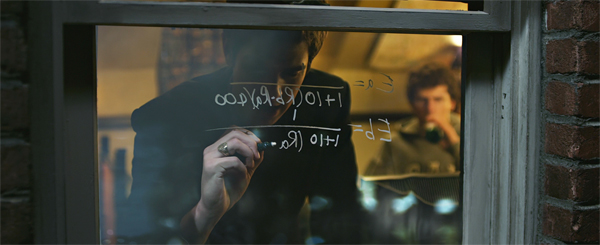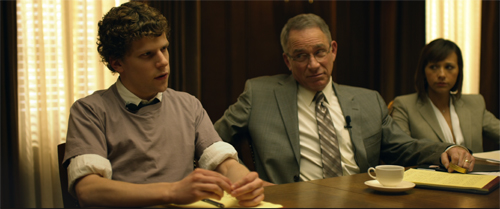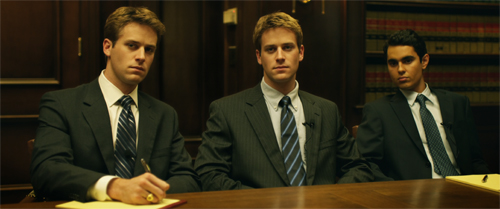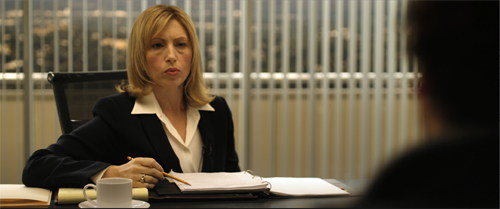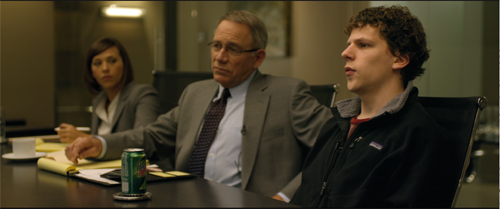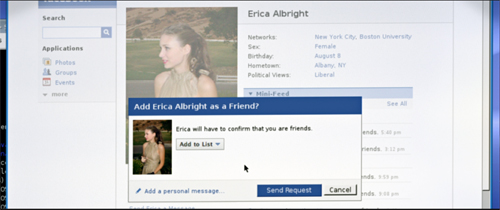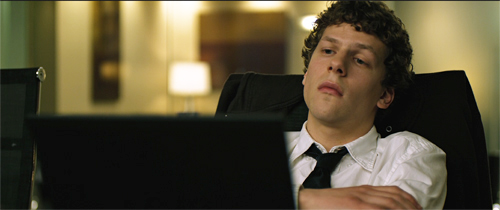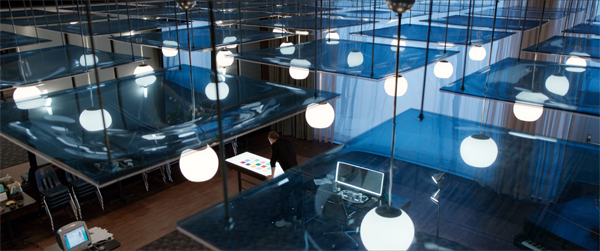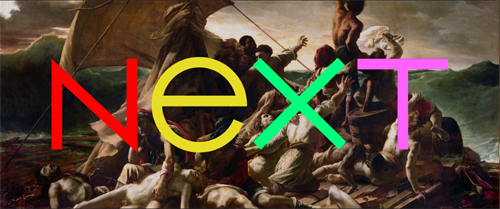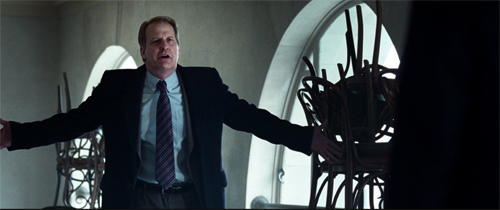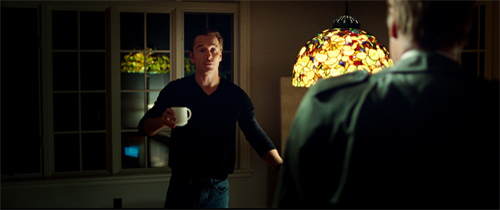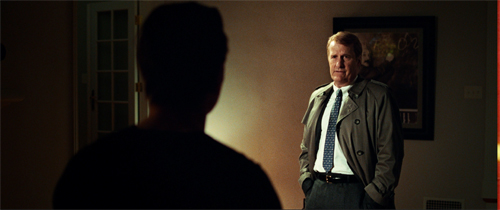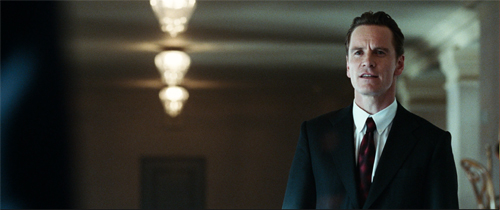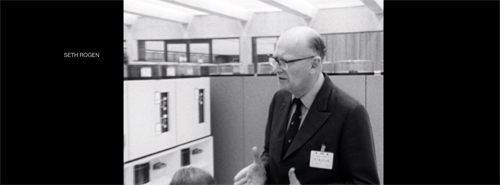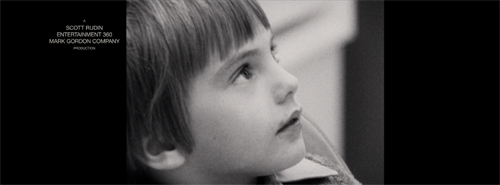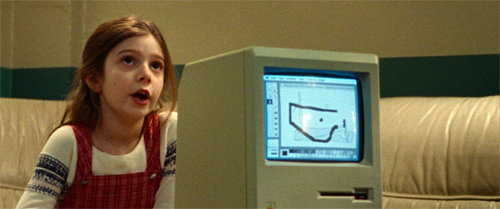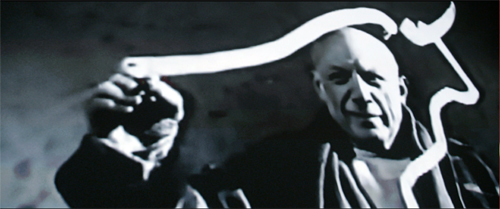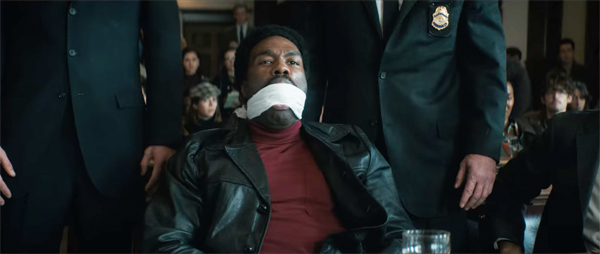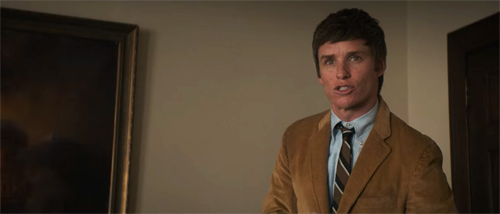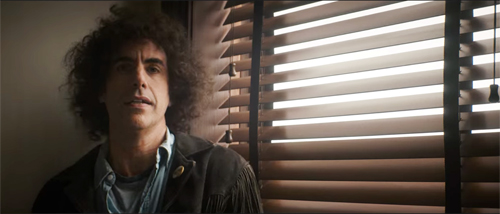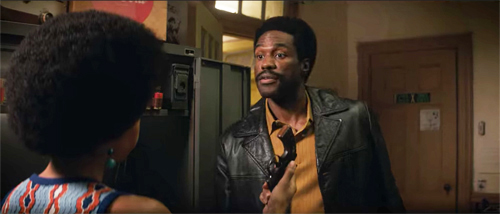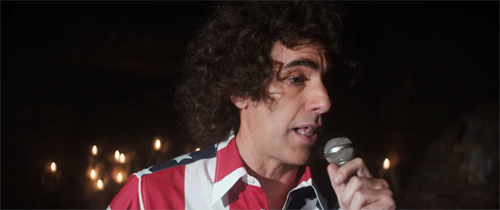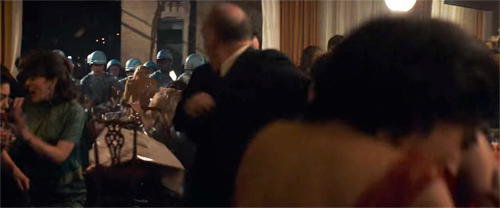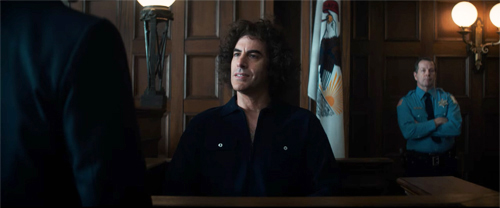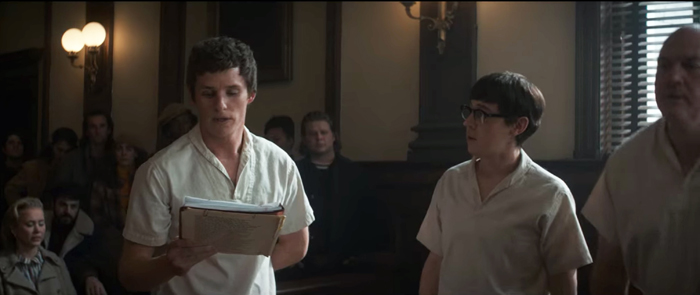THE TRIAL OF THE CHICAGO 7: Aaron Sorkin samples the menu
Saturday | January 16, 2021 open printable version
open printable version
The Trial of the Chicago 7 (2020).
DB here:
Love him or hate him, you have to admit that Aaron Sorkin has carved out a unique position in contemporary Hollywood. If we want to understand craft practice from the position of media poetics—that is, the principles governing form, style, and theme in particular historical circumstances—we can usefully look at him as a powerful example.
He’s more than merely typical, of course. In an era when the f-word exchanges of Palm Springs pass muster as comic dialogue, it’s refreshing to watch a movie where smart characters, sparring for high stakes, make a retort that’s more stinging than a slap in the face. These movies are written through and through, and in distinctive ways.
More broadly, Sorkin’s distinctive career invites us to consider the nature of innovation and originality in the popular arts. Because of “progressive” accounts of art history, we’re inclined to emphasize the shock of the (utterly) new as the mainspring of change and the central source of quality. The history of modern painting is written as a series of breakthroughs after Post-Impressionism, from Cézanne through Picasso and Mondrian and so on—the leap to abandon the past, the “next logical step” in an advance toward…what? Abstract Expressionism? Then what? Similarly, from Wagner to Strauss to Schoebberg to Berg to Webern and then…? Boulez? And…?
If the history of an art is a surging procession of avant-gardes, what then do we do with the artists who don’t fit? There are eccentrics, such as Balthus or Satie, who turn out to “point forward” at angles and detours that the linear-progress story doesn’t allow. What about those artists who refine or revise tradition in fresh ways? Where do we put Deineka, recently noticed as no mere Socialist Realist hack, or Shostakovich and Sibelius? Or, in the orthodox history of the detective story (whodunits surpassed by hardboiled), Rex Stout?
In the popular arts particularly, we should expect to find historical patterns less like the Breakthrough Canon, a high-altitude survey of outsize rock formations, than something closer to the ground. Studying mass entertainments like film and popular fiction, we’re likely to find valleys revealing unexpected views of familiar landscapes. There are daisies in the crevices.
In contrast to the Breakthrough account, non-western art traditions valorize accumulation of options and preservation of precedent. An artist earns acclaim for finding fresh ways to realize long-standing craft principles. The Japanese renga poet, the Chinese painter or calligrapher, and the Ottoman carpet weaver revise inherited techniques to reveal new expressive possibilities. Actually, in the West we have the same situation. Come down from the bird’s-eye view, and we’ll see the same fine-grain fluctuations. E. H. Gombrich pointed out how painters, the masters and the minor players, develop their pictures on the basis of inherited patterns—schemas that they have learned and that provide a point of departure for original treatment.
In several places I’ve proposed that filmmakers work with schemas too—pictorial ones, but also narrative ones. The shot/reverse shot technique is a schema, but so is the framed flashback, the four-part plot, and the strategy of beginning your action at a point of crisis.
You see where I’m going with this. Sorkin is worth studying, I think, as a very skilled craftsman. Surveying just a few of his films showed me that he finds ingenious and sometimes powerful ways to rework the schemas from the tradition of American filmmaking—and, of course, from the theatre.
Ventilating the play
A Few Good Men (1992).
If you want to reach a broad audience in today’s American cinema, you need to either make films with large doses of physical action (as crossover indie directors have found) or to find a signature identity that cultivates a following. In Sorkin’s case, he has dared to rely on plot, dialogue, and a distinct worldview that he has managed to make entertaining. Sorkin’s first plays, followed by the huge stage success of A Few Good Men (1989), typed him as a “theatrical” talent. But over thirty years his film projects sought to “cinematize” what’s usually considered stage technique.
The obvious example is his reliance on “walk and talk,” the long backward tracking shot covering characters striding toward us and spitting out dialogue rapidly. This develops the verbal drama while also yielding some attention-grabbing visuals. But there are less apparent ways Sorkin has blended theatrical technique and cinematic narration.
Early twentieth-century playwrights tended to put the “point of attack”–the moment in the story when you start the play’s plot–fairly close to the climax. Associated with Ibsen and other pioneers of “new theatre,” the late point of attack was a solid convention by the 1910s. As in A Doll’s House and Ghosts, the action starts at a point of crisis, and offstage events leading up to it get revealed through dialogue, sometimes called “continuous exposition.”
The trial schema is a good example of the crisis structure. Typically a trial starts after a lot of stuff has already happened, so the continuous exposition is supplied through testimony and speeches by the defense and prosecution. By 1915, Elmer Rice’s play On Trial was inserting flashbacks that reenacted trial testimony, but some plays stick only to what happens in the courtroom. The Off-Broadway production of A Few Good Men used that linear, present-tense premise, in the vein of earlier plays like The Caine Mutiny Court-Martial (1954) and Inherit the Wind (1955). The investigation of the death of a young Marine is pursued by a prosecution team running up against the military code and a couple of hard-headed officers.
But in preparing the film version, Sorkin adapted to the menu of storytelling options on offer in 1990s moviemaking. For instance, the opening scene could be a grabber, a strong moment that aroused curiosity or suspense. (This might have been a reaction to the need to grab the viewer who’d later see the movie on cable or video.) So instead of letting everything be recounted in the trial, Sorkin’s screenplay for A Few Good Men chose an earlier moment in the story action–a literal “point of attack” showing Dawson and Downey assaulting Santiago.
Later, Sorkin ventilates the play in a traditional manner, supplying scenes that present the prosecutors taking the case and investigating the circumstances. The courtroom scenes don’t begin until about an hour into the film, and they alternate with strategy sessions among the legal team and the defendants. The result is a “moving spotlight” narration, mostly attached to Kaffee the lead prosecutor and Lieutenant Commander Joanne Galloway, but ready to shift to other characters.
The timeline is chronological, except for a brief flashback dramatizing a letter initially voiced by Santiago. He appeals to Colonel Jessep to transfer him out of the unit for medical reasons. In exchange he offers to give information about an illicit fence-line shooting.
The flashback modulates to Jessep reading the letter aloud (an audio hook) and considering how to handle the situation.
This narration, shifting us from one group of characters to another, gives us a glimpse of the hidden story that the prosecutors need to uncover. The question will become not whether the officers overstepped their authority, but how they will be caught.
After A Few Good Men, we can see Sorkin’s cinematic career as exploring the creative space opened up in the 1990s, a space I’ve tried to map in The Way Hollywood Tells It and several blog entries. For one thing, there’s the matter of how to pick a protagonist.
It seems to me that the film version of A Few Good Men makes Kaffee the protagonist, with Joanne and Sam Weinberg as helpers–just as Jessep is the ultimate antagonist, with Kendrick as his helper. Centering on Kaffee and making him a gifted but glib and cocky young lawyer fits Cruise’s emerging star persona (Top Gun and The Color of Money of 1986, Cocktail of 1988). Sorkin has given us other single-protagonist plots, such as Charlie Wilson’s War (2007), Moneyball (2011), and Steve Jobs (2015).
We may identify Sorkin more with ensemble, or multiple-protagonist, plots because of the fame of his TV shows Sports Night (1998-2000), The West Wing (1999–2006), Studio 60 on the Sunset Strip (2006–2007), and Newsroom (2014-1016). A long-form series permits constant shifting of the protagonist role across a season. But in feature films, I think, a genuine equality among several protagonists is more common in “network narratives” than in crowded films like The Women (1939) and Ocean’s 11 (2001). In the latter, there tends to be a “first among equals”: one or two main characters whose fates are most important, even if subplots centering on others are woven in. Such is the case, I’ll argue, with The Trial of the Chicago 7.
Scanning the menu
Molly’s Game (2017).
Sorkin’s preferred artistic strategies emerge even more clearly, I think, in his handling of narrative structure. He has more or less systematically surveyed a range of storytelling possibilities.
Politically liberal but narratively conservative, The American President (1995) presents an utterly linear plot. As in other romantic comedies, the central couple shares the protagonist role. Their relationships change as they make decisions and respond to external forces. The film plays out the familiar Hollywood double plotline of love versus work: political pragmatism threatens the President’s affair with a lobbyist for environmental reform. There are no flashbacks or fancy time-juggling, and the dialogue is classic flirtation, wisecrack, and one-upsmanship. The one “Fuck you!” becomes a shocking turning point, a test of friendship.
The crisis structure in The American President is presented as a race against time to line up support for two White House bills. Moneyball (2011) creates a comparable pressure on its protagonist. After his baseball team’s loss and the departure of his top players, Billy Beane faces the need to rebuild his roster for the new season. In a classic problem/solution plot layout, he finds a helper in statistician Peter Brand. Again, the plot is mostly linear, though interspersed with summary montages of sports coverage and brief flashbacks to Billy’s own failed ballplaying career.
The fragmentary flashback that carries its own mystery was a common technique of 1990s cinema (e.g., The Fugitive) and remains a standard tool of filmic storytelling. Sorkin’s films use it often, usually to gradually reveals what’s driving the protagonist’s struggle. A version of “continuous exposition,” the flashback allows deeper character revelation; it can liven up the more static sections of the film; and it can provide its own little mystery revelation. In the Moneyball flashbacks we see Billy recruited, decide to give up a college career, and then face failure. This shows how he could have empathy for the second-tier players who are cast aside–and whom Brand’s moneyball algorithms give a second chance.
The time structure is a little more complicated in Charlie Wilson’s War. Here Sorkin samples another option in the schema menu. The story’s crisis is over; the plot starts at the epilogue. After a credits-sequence montage, we’re taken to a CIA awards ceremony, at which Charlie Wilson is honored for working strenuously against the USSR for thirteen years. This scene turns out to be a frame around an extensive flashback.
What follows deflates this high-flown tribute, as we go back to 1980 and see the reprobate congressman pressured into helping the Afghan people by finagling clandestine US investment in fighting the occupying Soviet troops. Other subplots, including an investigation of Charlie’s partying ways, are interwoven. The long flashback concludes and the film’s final sequence returns to the ceremony, with a replay of a grinning Charlie getting his award. The ABA structure makes the whole public event a charade, underscored by a final title: “And then we fucked up the endgame.”
By contrast, Molly’s Game is more fragmentary. We start with a teenage Molly Bloom in a skiing competition qualifying for the Olympics, but an accident knocks her out of the running. This early passage is in turn interrupted by brief flashbacks to earlier in her childhood, of other competitions and accidents and recoveries, overseen by her demanding father. Her first-person voice-over fills in the background, echoing the fact that the story is drawn from the book she’s written (both in real life and in the film).
“None of this has anything to do with poker,” a title ironically informs us, but it’s a tease. This prologue, mixing scenes from phases of Molly’s girlhood, characterizes her as having tenacity, determination, and not a little rage at her dad. Then the present-day action starts, as usual at a crisis. Molly is wakened from sleep by the FBI arresting her for illegal gambling. What has happened in the meantime? Even after the scene of her arrest, the film’s narration wedges in a VHS interview with young Molly in which she’s asked about her goals.
The revelation of the formative years, saved for late in Moneyball, is put up front in Molly’s Game. But now there’s a mystery: How does a promising athlete become a gambling queen?
The question is answered through another series of time shifts, and these occupy the bulk of the film. After Molly’s arrest, the narration fills in her arrival in Los Angeles and her job working for a sleazy entrepreneur who arranges poker games for rich men. Her rise in the world of underground gambling is intercut with present-time scenes of her consulting an attorney to take her case–a risky proposition, since her customers include Russian mafia. And the alternation of her legal problems and her gambling career continue to be interrupted by flashbacks to her as a little girl, as a teenager, and as witness to her father’s infidelities.
Sorkin has layered his plot within several time zones: present, immediate past, and distant past, with the earliest one including scenes scrambled out of chronological order. Again, the purpose is to reveal character motivation. The flashbacks suggest sources of Molly’s decision to triumph over weak men–perhaps, it’s suggested, as revenge for her father’s mistreatment of her and her mother. The time jumps also reveal her as a fierce competitor unwilling to give in. Athletics, it turns out, has a lot to do with poker.
The network as character prism
The Social Network (2010).
If there were a simple progress in Sorkin’s exploration of the menu of options, you’d expect that The Social Network would come later than it does. Yet before Molly’s Game yielded three principal time layers (the legal case, the career rise, the girlhood), Sorkin’s screenplay tracing the rise of Facebook had already fielded something more complicated than that.
Still trying variants, Sorkin this time puts the motivating moment, the incident that drives the character, at the front of the film. In 2003, Mark Zuckerberg is on a date with Erica Albright. His arrogance provokes her to break up with him. In a burst of pique, he turns a blog into a page that denounces her and asks readers to rate local women. With the reluctant help of his friend Eduardo Savarin, the site crashes the Harvard server and Mark faces disciplinary action.
At this point the film splits into more time-tracks, again transmitted through legal proceedings. The Harvard disciplinary hearing is filtered through a deposition responding to Eduardo’s lawsuit against Mark, long after their partnership has collapsed. Sorkin could have picked this testimony as his point of attack for opening the film, then flashed back to the origins of the suit. Instead, like Molly’s Game, The Social Network starts its plot in the past, skips ahead to the future, and then fills in more of the past.
A second lawsuit is in progress, this time from the Winklevoss twins, and a second string of deposition scenes. Apparently more or less simultaneous with the Eduardo sessions, these also anchor us in an approximate present and cue up incidents in the past. For instance, in a past scene, after an ally of the twins tells of Mark’s successful webpage, the narration cuts to the opening of the Winklevoss case’s depositions, and then back to the brothers recruiting Mark to work on their project.
The dual-track depositions in the present allow Sorkin not only to segue into illustrative scenes in the past, but also to set up crosstalk between the two lawsuits. Immediately after Mark dodges questions from the Winklevii, we see him dodge questions in Eduardo’s session.
By the 2000s, audiences trained in the time-shifting of the 1990s could follow these quick alternations. It’s also up to the director to keep us oriented through differences in costume, angle, lighting, color design, and other elements.
If you take the opening portion as what sets the narrative Now, you could call the deposition scenes flashforwards. Alternatively, you might consider those scenes as Now, although the opening orientation to them has been deleted. Either way, Sorkin has provided a flexible, dynamic structure that allows us to study Mark’s behavior and others’ responses to it.
One of the dreams of storytellers who embraced multiple-viewpoint plots was the idea of letting us see different, even contradictory facets of a character. The prospect was broached by Henry James (in his novel The Awkward Age) and Joseph Conrad (in Lord Jim, Chance, and other books). On the stage, Sophie Treadwell had experimented with it in The Eye of the Beholder (1919). Herman Mankiewicz and Orson Welles played with the possibility of such a “prismatic” narration in Citizen Kane, perhaps as a result of Mankiewicz’s unproduced play about John Dillinger.
By using the trial schema a storyteller can present a character’s public self-presentation, the impression management that tries to win adherence. But the fact that different people testify about a situation also offers prismatic possibilities. Here, the chief contrast is between Mark’s snotty recalcitrance at the counsel table and his swagger in the past.
During the film’s opening, when Mark confides in Erica and Eduardo, we’re about as close to penetrating his mind as we’ll get in the film. Later the film’s narration offers less a study in how his mind works than a portrait of how he handles people–his social survival strategies. The range runs from sheer bluster, as when he tries to overwhelm Erica, through awkward acceptance of class ambition when he meets the Winkleviii, to evasion, threats, and bumbling efforts at friendship. At the end, he goes flat and legalistic, telling Eduardo: “You signed the papers.” The film’s denouement arrives when Eduardo’s lawsuit is launched. “Lawyer up, asshole.”
The opening sections began in the past, but the ending leaves us hanging in the present. At a pause in Eduardo’s suit, the film concludes on the image of blank-faced Mark staring at his monitor. Isolated by his betrayal of the one person close enough to have been a friend, he’s checking Erica’s Facebook page.
This conclusion lets us imagine that sexual and romantic frustration, exposed in the opening, have reinforced Mark’s low-affect aggressiveness. It’s also a suggestion that his slightly vampirish predation suits him for the age of the social network. But we’ll never be sure, because his disdainful indifference is his armor against everyone he encounters.
As with Molly’s Game, this cluster of parallel timelines is intelligible and forceful as a revision of a schema (present/ past/ present) that we know well. And careful cutting, sound work, and performance have kept us on track throughout.
End to end control
Steve Jobs (2015).
In films that don’t rely on chases, fights, explosions, time travel, fantasy, or extraterrestrials, what can hold your interest? For one thing, snappy talk. The old theatre adage claims that dialogue needs to do one of three things: advance the action, delineate the characters, or add humor. Sorkin’s dialogue does all of them at once.
Steve Jobs is braced by his assistant Joanna while he frets over a press story.
“’The only thing Apple’s providing now is leadership in colors.’”
“Don’t worry about it.”
“What does Bill Gates have against me?”
“I don’t know, you’re both out of your minds. Listen to me–”
“He dropped out of a better school than I dropped out of . . . but he is a tool bag and I’ll tell you why.”
“Make everything all right with Lisa.”
“You know–Joanna–boundaries.”
“You’ve come to my apartment at 1 AM and cleaned it, so tell me where the boundary is.”
“There, let’s say it’s there.”
“If I give you some real projections, will you promise not to repeat them from the stage?”
“What do you mean real projections? What have you been giving me?”
“Conservative projections.”
“Marketing’s been lying to me?”
“We’ve been managing expectations so that you don’t not.”
“What are the real projections?”
“We’re going to sell a million units in the first ninety days. Twenty thousand a month after that.”
Each reply shows that a strong line is like an arrow–feathered at the top, barbed at the tip. If your conflict is psychological, then the last part of the line should land with a punch. “We’ve been managing expectations so you don’t not.”
But the lines don’t exist in isolation. Every stretch of the film is a vivid lesson in whipping together bits of earlier conflicts, jumping from one to another as Jobs parries and ducks and changes the subject, all the while tension rises. One issue is picked up (Steve’s reaction to press coverage), interrupted by others (his rivalry with Gates, his friction with his daughter), followed up by a long-running relation with Joanna (“boundaries”), then a big piece of information: one goal, a sales target set in the first segment, has been achieved. But the others are left dangling, to be revisited, and we are looking forward to that.
This sort of repartee brings back the era of snappy chatter. The exchanges recall the films set in rehearsal halls (Footlight Parade), news offices (His Girl Friday), movie studios (Boy Meets Girl), gangster cafes (All Through the Night), and even a research institute (Ball of Fire). A few films of recent years, such as The Paper, successfully recapture the exhilaration of such fast, pungent dialogue. Sorkin delivers it consistently.
Steve Jobs is one of Sorkin’s most structurally ambitious projects. Here he tries out another menu item, that of block construction. In this layout, we get two or more marked-off chunks or chapters, sometimes without the same characters. Block construction came into fashion with Mystery Train (1989), Slacker (1990), and other indie works, and it remains a basic resource for Tarantino and Wes Anderson.
As ever, Sorkin rewrites the block premise as a drama convention, the division into spatially and temporally confined acts. The plot of Steve Jobs is organized around three public product launches: in 1984 (the Macintosh), 1988 (the NeXT Black Cube), and 1998 (the iMac). Each event teems with crises large and small, public and private. They’re all parallel, in that we see the few minutes of preparation leading up to the curtain-raising. Like a party or restaurant scene in a play, a product launch offers a confined space in which characters and story lines can mingle. The pressure of a product demo allows Sorkin to create deadlines and motivate many walk-and-talk passages through backstage corridors.
Just as theatrical is the flow of people into and out of Steve’s presence. From act to act the same associates are ushered into Steve’s presence: his former romantic partner Chrisann, his business partner Steve Wozniak, John Sculley, engineer Andy Hertzfeld, a journalist, and Lisa, the daughter that Steve is reluctant to acknowledge. The French phrase liaison des scènes, “scene linkage,” captures the way that within a single setting characters’ entrances and exits break the act into distinct pieces.
In addition, Sorkin doesn’t confine his time frame to the duration of the demos. As in other films, flashbacks interrupt the present. The 1984 segment uses only one flashback, a visit to garage-hacking days that sets up the dispute about open and close architecture. The flashbacks thicken in the second segment, which reveals the conflict that led Steve to break off with Sculley. That quarrel in the past is tightly crosscut with their confrontation in the present, and as the tension builds one man in the present is replying to an objection in the past. This rapid pacing is one way a “theatrical” premise can hold an audience accustomed to action movies.
Like Fincher’s intercut depositions in The Social Network, Danny Boyle’s handling keeps us oriented through staging, costume, color, lighting, and shot/ reverse shot eyelines.
The block most saturated with flashbacks is the third, the one launching the computer that brought Apple to marketplace triumph. This chapter incorporates glimpses of scenes shown in the first two segments, along with revelations of Steve’s first approach to Sculley. This last recollection is prompted by his admission that he long ago found the biological father who gave him up for adoption. (Many of Sorkin’s protagonists have Daddy Issues.) Again, a big revelation about character motivation is saved for a flashback late in the film.
In addition, other crises come to a head. Steve appears to break definitively with Wozniak, and he reconciles with Lisa, whom he hasn’t, after all these years, fully taken into his life. As he achieves his goals–a successful computer at last, a settling with Wozniak and Andy, and a tentative accceptance of Lisa–he displays more chastened and cautious behavior. He has admitted his fallibility (he was wrong about the Time cover), he has realized what he lost in challenging and trashing Sculley, and he’s ready to move to the next challenge (“music in your pocket”). True, he treats Woz brutally, but Woz gets the final word: “It’s not binary. You can be gifted and decent at the same time.” Steve doesn’t change completely; he just gets a bit more human.
Interestingly, these cadences fit the four-part structure that Kristin’s Storytelling in the New Hollywood has revealed governing many classical plots: Setup, Complicating Action, Development, and Climax, followed by an epilogue or tag. Sorkin has “cinematized” his three “acts” by letting the final one harbor Development, Climax, and an epilogue.
Kristin also points out that classical film story telling relies on motifs that weave their way through the film. Not only music but lines of dialogue and images recur to point up repeated actions, indicate changes in character, or add humor. (A running gag is a comic motif.) Yet movies didn’t invent this tactic. Novels, poems, and plays rely on recurring motifs. Macbeth circulates imagery of blood and ill-fitting garments, while The Importance of Being Earnest wrings a lot out of the mysterious word “Bunbury.”
Steve Jobs is packed with motifs, far more than most movies I can think of. Some bounce around one segment and into another, and several come back at intervals in all three. All the characters relitigate old complaints, and Steve masterfully deflects a conversation by returning to remarks he’s made before. Here’s a partial list of items that are recycled again and again.
Starting exactly on time, the controversial SuperBowl ad, the need to turn off the Exit signs, a bottle of ’55 Margot, the Time cover, the purported treachery of Dan Kottke, “a million in the first 90 days,” “I don’t have a daughter,” 28%, Woz’s request to acknowledge the Apple II, “playing the orchestra,” closed versus open systems, the name Lisa, “end to end control,” 2001, “a dent in the universe,” slots, Pepsi, the psychology of adopted kids, “You get a pass,” the threat of a press release, and “which Andy?”
For Sorkin, even “Fuck you” becomes a motif rather than a space-filler.
A significant cluster involves the arts, particularly music and painting. In their quarrel the two Steves compare themselves to the Beatles, and Bob Dylan’s image and songs float through the movie. This association with the arts helps offset the unpleasant side of Jobs’ temperament, his crisp, frosty bullying of others and his relentless imposition of his “reality distortion field.”
Another motif softens him a bit: his desire to bring computing to kids. The prologue, in which Arthur C. Clarke is interviewed about the future of computing, sets up several motifs–the idea of separating oneself from others (Steve in a nutshell), the importance of home (associated with Chrisann’s demands), and particularly childhood. The reporter interviewing Clarke has brought his boy along, and they discuss how a new generation will quickly grasp the power of personal computing.
That motif is dramatized when, at first indifferent to five-year-old Lisa, Steve uses her as a demo to show Chrisann what the Mac can do. But his interest rises when Lisa intuitively understands that she can draw with it. “Lisa made a painting on the Mac,” he says thoughtfully. He seems to realize that she could be his brainy daughter, and he resolves to put her in a good school. Her drawing looks forward to Picasso’s swooping dab at a bull in the climactic montage of the 1998 launch.
The ping-ponging motifs are mostly in the dialogue, though. They push the action forward, recall earlier moments, and characterize the combatants while also yielding some laughs. Above all, the motifs chart Jobs’ character arc. We know that he’s more committed to Lisa at the end when he breaks his routine and says he’s willing to start the performance late. Soon he will reveal that he has saved her painting to give to her.
In The Way Hollywood Tells It I call Jerry Maguire a “hyperclassical” movie–more classical than it needs to be, flaunting a virtuosity of construction and motivic echo. I vote for Steve Jobs as another instance. Sorkin has used cinema to multiply motifs to a higher power.
Exporting ideas across state lines
The Trial of the Chicago 7.
One innovation of turn-the-century-theatre was the so-called “drama of ideas” or “problem play.” Ibsen, John Galsworthy, and Bernard Shaw sought to break away from standard intrigues of mystery and romance in order to dramatize women’s rights, labor struggles, and other social issues. Sorkin, with his liberal political bent, has brought that legacy to his film work. The subjects and themes he tackles have become as distinctive a marker of his work as any strategies of form and style.To be more precise, his formal and stylistic strategies work upon the ideas he wants to put forth.
How much private life is a US President entitled to? What is the duty of a politician who wants to enact social change? For a tech entrepreneur, where does idealism end and domination begin? Why should a woman not be able to compete on equal terms with men? Does social change come best through reform (reason, the ballot box) or revolution (change of consciousness)? Something like this last occupies him in The Trial of the Chicago 7.
The problem at the center of the film is: How to protest, and eventually stop, US involvement in the Vietnam war? The film’s prologue and epilogue announce the sweep of the issue. It begins with President Johnson ramping up troop commitments and establishing the draft lottery, all during a wave of assassinations. The film ends with Tom Hayden reading out the names of troops who have died while the trial was dragging on. Early on, Rennie Davis establishes the list because it’s “who this is about.”
The defendants in the trial are only loosely associated. Bobby Seale doesn’t know the others and was in Chicago just four hours; he’s also denied counsel. Sorkin carves out two major factions. Tom Hayden and Rennie Davis, as student activists out of SDS, are presented as preppy intellectuals, committed to antiwar action within the frame of protest and legal debate. Abbie Hoffman and Jerry Rubin, associated with the Yippies, are countercultural provocateurs. They anticipate a spectacle of innocence attacked by those in power. They will show the Chicago Democratic convention to be staged, as Walter Cronkite says at the end of the opening montage, in “a police state.”
Although Tom’s and Abbie’s factions communicate a little before the events, it’s the pressure of circumstances in Grant Park that pushes them into dispute. Alongside them Sorkin develops subplots that suggest other political alignments. David Dellenger’s commitment to nonviolence is tested by the flagrant repression of Bobby Seale. Richard Schultz goes along with orders to prosecute, knowing that the case is trumped up. Jerry Rubin falls briefly in love with an undercover policewoman. Fred Hampton tries to help Seale, only to be killed. Attorney William Kunstler discovers that he has a surprise witness to call. Editor Richard Baumgarten notes that in cutting all these lines of action together: “I feel like one of the great successes of how this film unfolds is that each of the characters does have a moment, or multiple moments.”
Tom and Abbie emerge as the “first among equals” because they most sharply articulate alternative accounts of what they’re facing. They aren’t dual protagonists, like a romantic couple tackling common problems. They’re at odds throughout. On the first day when Tom tries to get agreement on goals, Abbie challenges him.
Early court scenes show Tom annoyed by Abbie’s antics, but neither is really an antagonist for the other. Tom can half-humorously admit that he got a haircut to impress the judge, and clearly Abbie admires Tom. The antagonists are the government prosecutors and Judge Hoffman. Tom and Abbie function as what Kristin calls parallel protagonists. Like Mozart and Salieri in Amadeus, or Captain Ramius and Jack Ryan in The Hunt for Red October, they are at once opposed to one another and fascinated by each other. They both compete and cooperate.
What does each one want? This will become part of the drama’s problem, because the two men will be charged with coming to Chicago to stir up violence. Sorkin shrewdly postpones the question in the opening montage that brings some main players together through crosscutting. Incomplete dialogue hooks make their goals somewhat mysterious.
Tom: Young people will go to Chicago to show our solidarity, to show our disgust, but most importantly–
Abbie: –to get laid by someone you just met. . . .We’re going peacefully, but if we’re met there with violence, you better believe we’re gonna meet that violence with–
Dellenger: –non-violence. Always non-violence and that’s without exception. . . . (asking his son what to do in the face of police:)
Dellenger’s son: Very calmly and very politely–
Bobby Seale: –Fuck the motherfuckers up!
Seale’s capper would seem to negate the nonviolence of Dellenger’s position, but at the end of the montage Bobby refuses the pistol his colleague Sandra offers him. “If I knew how to use that, I wouldn’t need to make speeches.”
Unlike Dellenger, he’ll hit back if attacked first. So now only the positions of Tom and Abbie remain undefined.
Eventually, Tom exposes his rationale. If they can prove they were peaceful demonstrators within their rights, it will help “to end the war and not fuck around.” That demands treating the trial seriously. “We as a generation are serious people.” And he doesn’t want to raise police culpability. “We’re protesting the war, not the cops.”
From the start Abbie insists that the trial isn’t a matter of law but of contingency. “This is a political trial.” They were chosen to be examples, and the two lesser defendants are “give-backs,” people the jury can let off with a clear conscience. Abbie and Jerry came to Chicago knowing that police violence was very likely. (Cronkite said so too.) The best way to prove state oppression is to lay it bare, preferably with gonzo humor. After all, the whole world is watching.
The film’s structure supports Abbie’s analysis. Sorkin’s narration, using a moving-spotlight approach, has from the start tipped us that Attorney General John Mitchell has ordered Schultz to prosecute the 7 on flimsy grounds. Mitchell, a spiteful conservative, wants to crush antiwar protest, but he’s also petty. He’s miffed that Johnson’s AG Ramsey Clark insulted him on the way out of office. Mitchell has assembled a mixed bag of antiwar activists to charge with conspiracy. (In an ironic twist, they conspire most successfully after they have been thrown together for trial.)
So the problem play becomes a progress toward understanding political power. Tom Hayden (and to a lesser degree Kunstler) come to grasp the reality of an engineered police provocation and a show trial. Abbie’s privileged insight is further stressed by the fact that he’s the only character given a narrator role. Sorkin interrupts the trial with shots of Abbie at a mike in a club, telling the story of the fights during the riots, correcting the false testimony of the cops. In stage tradition, Abbie is the raisonneur, the explainer.
The conflict between Tom and Abbie gets specified gradually, sharpened in strategy sessions where Tom berates the Yippie contingent for clowning. If progressive politics is branded as childishness, “We’ll lose elections.” Abbie calmly replies that “We’re going to jail for who we are.” The debates are about tactics as well. Tom wants the demonstration to keep away from the convention hall, while Abbie insists that they go downtown. As it turns out, the police squeeze them out of the park and force them into a trap that yields the spectacle that Abbie and Jerry anticipated.
Through crosscutting Sorkin again creates several layers of time: the runup to the convention, the protests themselves, the trial, and a more unspecified moment when Abbie is at the microphone narrating. More linear than the time mosaics of Molly’s Game and Steve Jobs, the Chicago 7 array might seem a step back toward the classic trial schema. Basically, the court proceedings frame the flashbacks to the purported crimes.
The relative linearity is needed, however, to allow us to chart the progress of the parallel protagonists. In a neat balancing act, Sorkin dramatizes character change with Tom Hayden and character revelation with Abbie Hoffman.
Hayden’s character arc traces his realization that the trial is rigged. He has brought table manners to a revolution. He presents a wholesome appearance, and when pressed by Bobby he half-admits he’s rebelling against his upbringing. (Daddy Issues again.) Even his “reflex” action of rising when His Honor enters, violating the pact among the 7, shows that the impulse to behave well is struggling against his sincere urge to end the war through citizen action.
Yet Tom has an outlaw side as well. He releases the air from the tire of a cop car to allow Rennie to escape surveillance. At the climax, seeing Rennie beaten, he calls for blood to flow through the city–not, he tries to explain, the blood of others, but the blood freely given by the protesters. Still, he joins forces with Abbie, Jerry, and Dellenger as they are lured onto the footbridge and into the cops’ trap. The cops, having choreographed the street assembly, push them through the tavern window.
Tom, our main viewpoint vessel in the film, also visits Ramsey Clark with his attorneys. It’s then that he realizes the trial is Mitchell’s political charade aiming to override Clark’s decision not to prosecute the demonstrators. So, after Clark has testified (and sees his testimony suppressed by Judge Hoffman), Tom can redeem himself.
Judge Hoffman has offered Tom clemency before he makes his final statement. The good boy who had asked, “Why antagonize the judge?” rises in polite defiance to read the names of the dead. He will take the same punishment meted out to the others. He now understands revolution as spectacle.
So there’s a little of Abbie in Tom. In the same final stretches of the film, we learn that there’s a little of Tom in Abbie. Tom had planned to testify, but he can’t justify what he said on tape. So Abbie takes the stand. His slapstick persona drops. Behind the Jewish Afro and the wisecracks is revealed an intellectual who can quote the New Testament and gently praise Tom as a patriot. Schultz questions him: Was he hoping for a confrontation with the police? “I’ve never been on trial for my thoughts before.”
As in the opening montage, Sorkin cuts away before Abbie answers, and his pause and grave demeanor let us consider that for all his bravado, he has regrets about the crisis he saw coming.
Like any problem play, The Trial of the Chicago 7 can be criticized for stacking the deck, or oversimplifying, or recasting the problem in ways that favor certain interests (e.g., white college-educated men). But that critique is the risk artists run all the time, even in the most anodyne “nonpolitical” work. If critics study how films achieve their effects, viewers can be more aware of how the schemas we know are shaped by the movies we see and get a clearer sense of means and ends, purposes and fulfillment.
At the same time, artisanal skill in a robust tradition is intrinsically worth analysis. That analysis can reveal new possibilities in what cinema can do. In The Trial of the Chicago 7 Sorkin creates a dramaturgy that embodies ideas in characters’ conflicts, changes, and hidden facets. Once more a theatrical premise has been turned into classically constructed cinema. Sorkin’s work offers one way that this tradition can stay fresh–not through shocking breakthroughs but by highly skilled reworking of schemas accessible to a broad audience. You know, the way theatre used to be.
Thanks to conversations with Kristin and Jeff Smith, who helped me clarify my ideas.
For more background on this sort of narrative analysis, there’s a synoptic blog entry here. This earlier one might also be of use. Rory Kelly offers some nuanced analysis of the Hollywood character arc.
Cinema’s debts to theatre are considered in this entry, and some others in the category Film and other media. On the power of artisanal care, there’s this on Buster Scruggs.
Another entry discusses how actors use their faces in The Social Network.
P. S. 5 March 2021: I’ve just found some interesting remarks from Sorkin about what he calls “the puppy crate”–the need to focus a drama in a confined time and space. The Trial of the Chicago 7 is an obvious example, but so too is Steve Jobs. “I need four walls really badly.”
The Trial of the Chicago 7 (2020).












